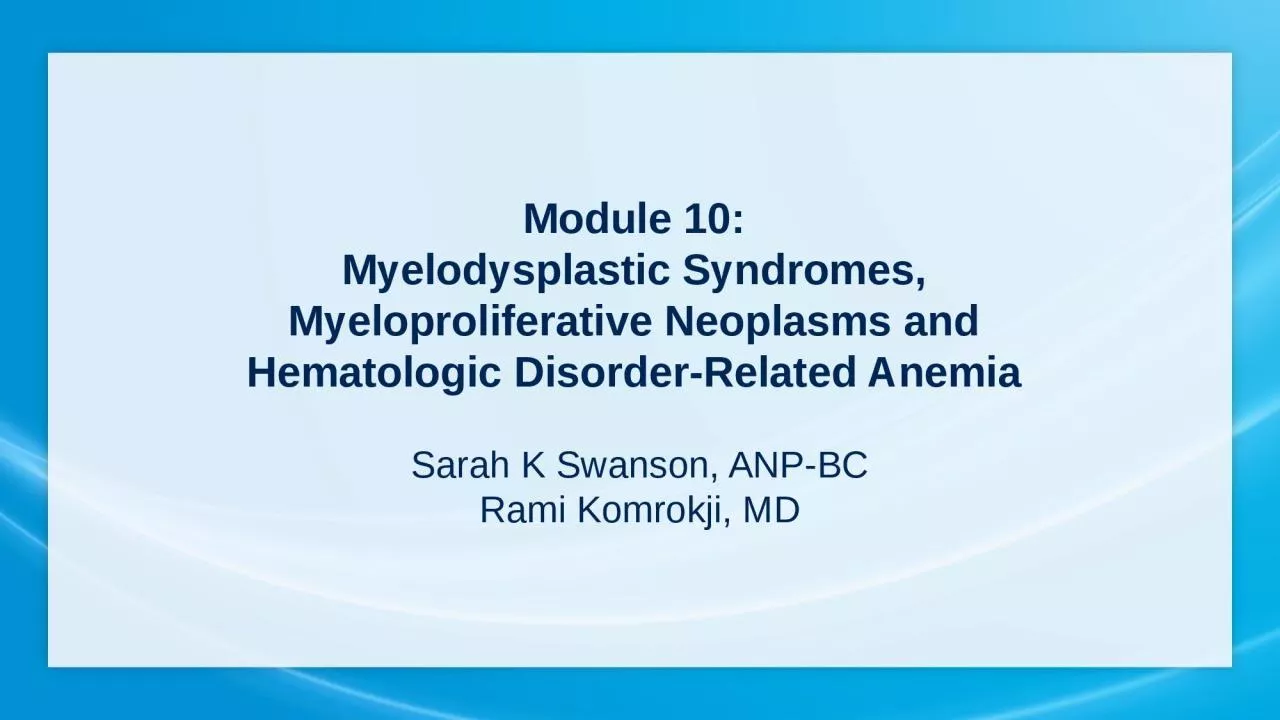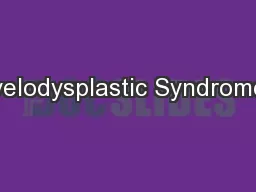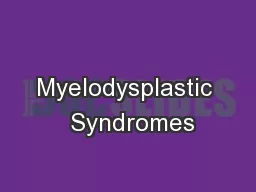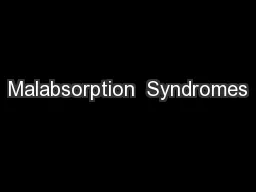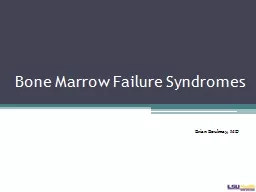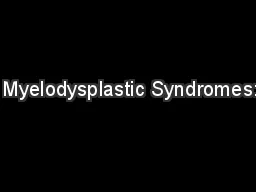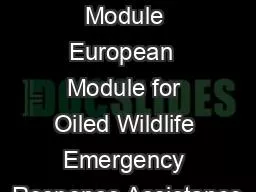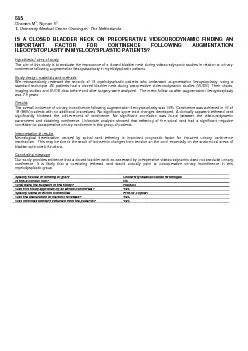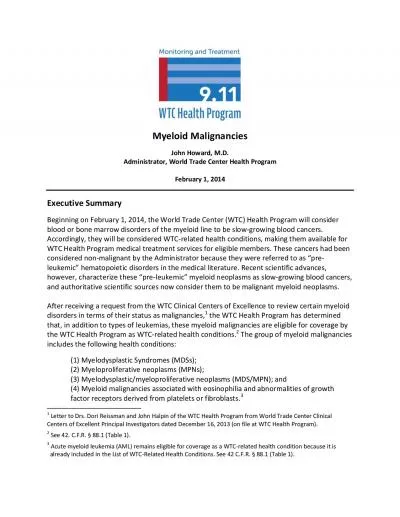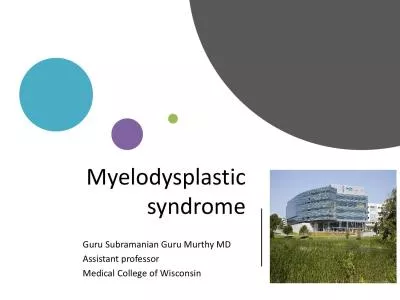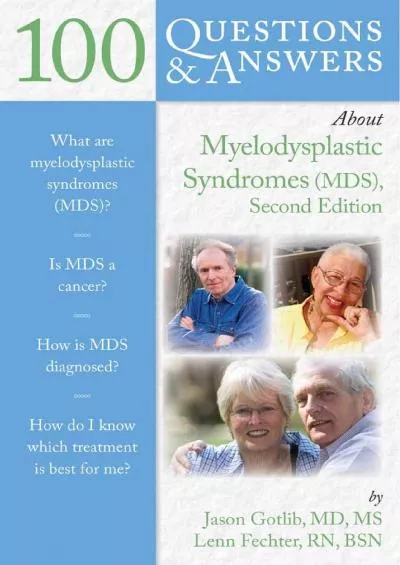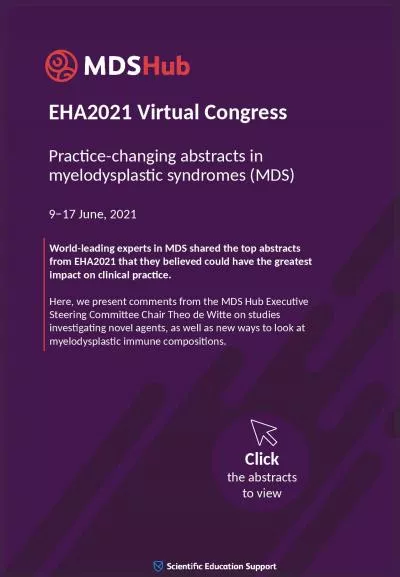PPT-Module 10: Myelodysplastic Syndromes,
Author : badra | Published Date : 2024-02-09
Myeloproliferative Neoplasms and Hematologic DisorderRelated Anemia Sarah K Swanson ANPBC Rami Komrokji MD Disclosure for Ms Swanson No relevant conflicts of
Presentation Embed Code
Download Presentation
Download Presentation The PPT/PDF document "Module 10: Myelodysplastic Syndromes," is the property of its rightful owner. Permission is granted to download and print the materials on this website for personal, non-commercial use only, and to display it on your personal computer provided you do not modify the materials and that you retain all copyright notices contained in the materials. By downloading content from our website, you accept the terms of this agreement.
Module 10: Myelodysplastic Syndromes,: Transcript
Download Rules Of Document
"Module 10: Myelodysplastic Syndromes,"The content belongs to its owner. You may download and print it for personal use, without modification, and keep all copyright notices. By downloading, you agree to these terms.
Related Documents

